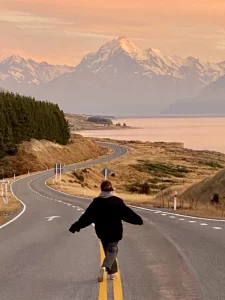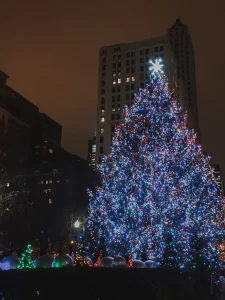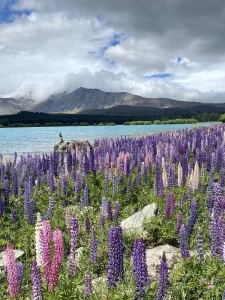For lots of people, New Zealand is a dream travel destination. There is unbeatable nature, culture, and tons of things to do. I’ve put together this guide to traveling New Zealand after multiple trips and several months of living here. It will go over everything you could possibly need to know about how, when, and where to travel the country.
Buckle in — this will be a long post!
Last updated 31 March 2023
- Where is New Zealand?
- New Zealand's capital
- Islands of New Zealand
- How to get to New Zealand
- Entry requirements before traveling New Zealand
- When to visit New Zealand
- Places to visit when traveling New Zealand
- Traveling New Zealand
- Accommodation when traveling New Zealand
- How much will my New Zealand trip cost?
- Things to do when traveling New Zealand
- New Zealand people & culture
- Languages in New Zealand
- Religion
- Currency
- Safety when traveling New Zealand
- Wifi and SIM cards
- New Zealand food
- Drinking culture when traveling New Zealand
Where is New Zealand?
New Zealand (or Aotearoa, “land of the long white cloud”) is located in the southwestern Pacific Ocean. Its closest neighbor, Australia, is over three hours away, making it a pretty geographically isolated country. New Zealand is on the continent of Oceania, along with Australia and several Pacific island countries.
Travel time from New Zealand to:
- Sydney, Australia: 3 hours 35 minutes
- Los Angeles, USA: 12 hours
- Tokyo, Japan: 14 hours
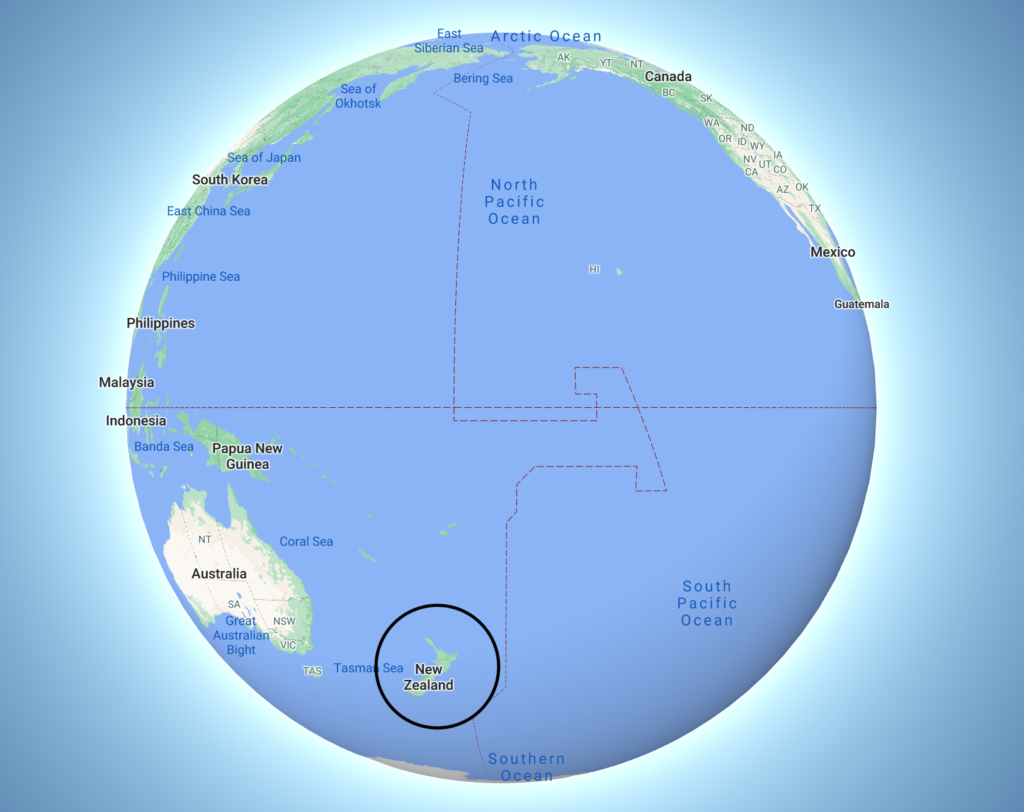
New Zealand’s capital
The capital city of New Zealand is Wellington on the North Island. Wellington is home to the country’s Parliament Buildings, the most popular of which is known as the Beehive.
Although Wellington is the capital, it is not the largest city. Auckland is the country’s most populated city with a population of 1.5 million.
Islands of New Zealand
New Zealand is made up of several islands. The two largest in population and size are known as the North Island (Te Ika-a-Māui) and the South Island (Te Waipounamu). They are separated by a bit of water called the Cook Strait.
Besides the main two, there are estimated to be over 600 islands around New Zealand. A few of the larger ones include Stewart Island to the south, Waiheke Island near Auckland, and the Chatham Islands to the east.
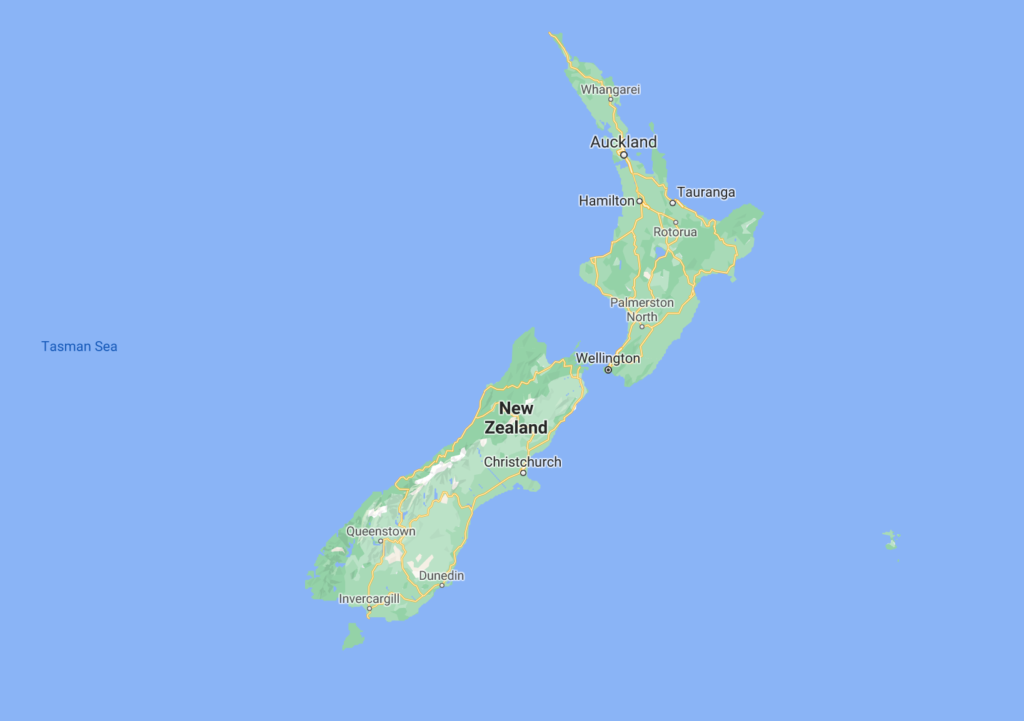
How to get to New Zealand
To get to New Zealand, you’ll probably fly into Auckland Airport (AKL). This is the largest airport, and the one most equipped for long-haul flights. Christchurch, Wellington, and Queenstown also have international airports, with most of their flights coming from Australia.
There are lots of airlines that offer direct flights to New Zealand from all over the world. Air New Zealand is the country’s flagship carrier and a popular choice for flights into the country. A one-way ticket from LAX to AKL could range between NZ$800 and $1600.
⇉ A flight attendant’s guide to long-haul flight essentials
Entry requirements before traveling New Zealand
As of 31 July 2022, the New Zealand border is open for anyone meeting the entry requirements. There are no more quarantines or mandatory two-week managed isolation stays.
When to visit New Zealand
New Zealand is located in the Southern Hemisphere, so the seasons are opposite to what most of us are used to. Each season has its benefits and traveling New Zealand will be a bit different depending on when you go. Keep in mind that it’s typically always a bit warmer on the North Island than the South Island.
Spring (September – November)
If you can swing it, spring is a great shoulder season to visit New Zealand. Many accommodations and attractions are priced cheaper than in the summer. Temperatures range from 4.5 – 18°C (40 – 65°F). Tons of flowers bloom and baby lambs are born!
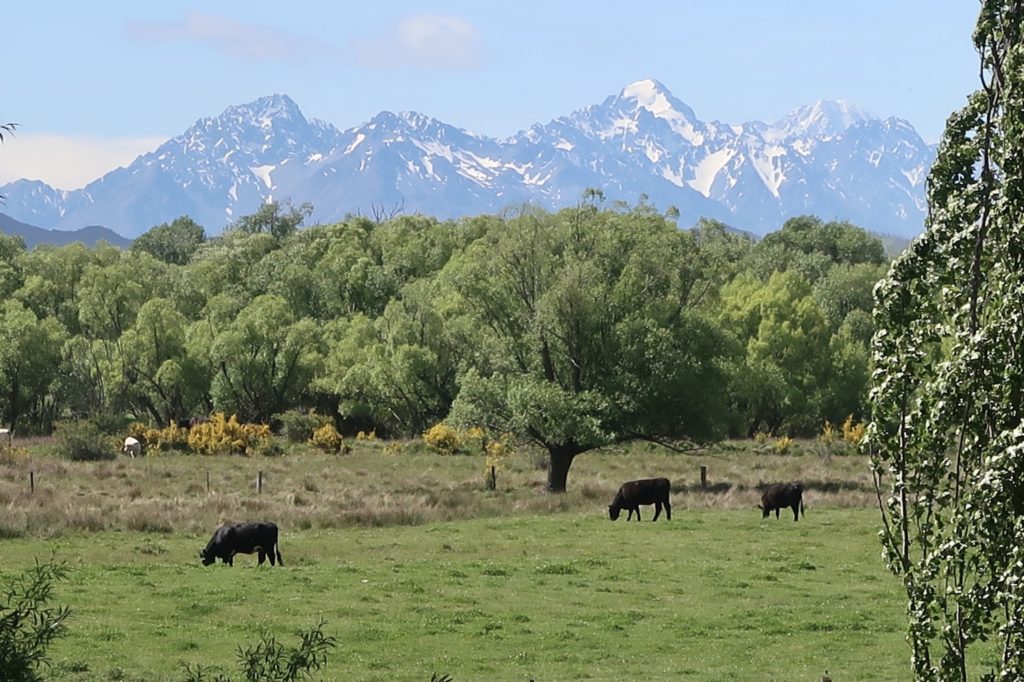
Summer (December – February)
Summer is the time to come if you’re looking for good weather. It’s easy to enjoy all of the beaches, water, and outdoor activities New Zealand has to offer — temperatures range from 21 – 32°C (70 – 90°F). December is also the best month to come if you want to see lupins!
Because summer is the most popular time for tourists to come, certain destinations can get pretty crowded. It’s also normal for accommodation and ticket prices to increase a bit.
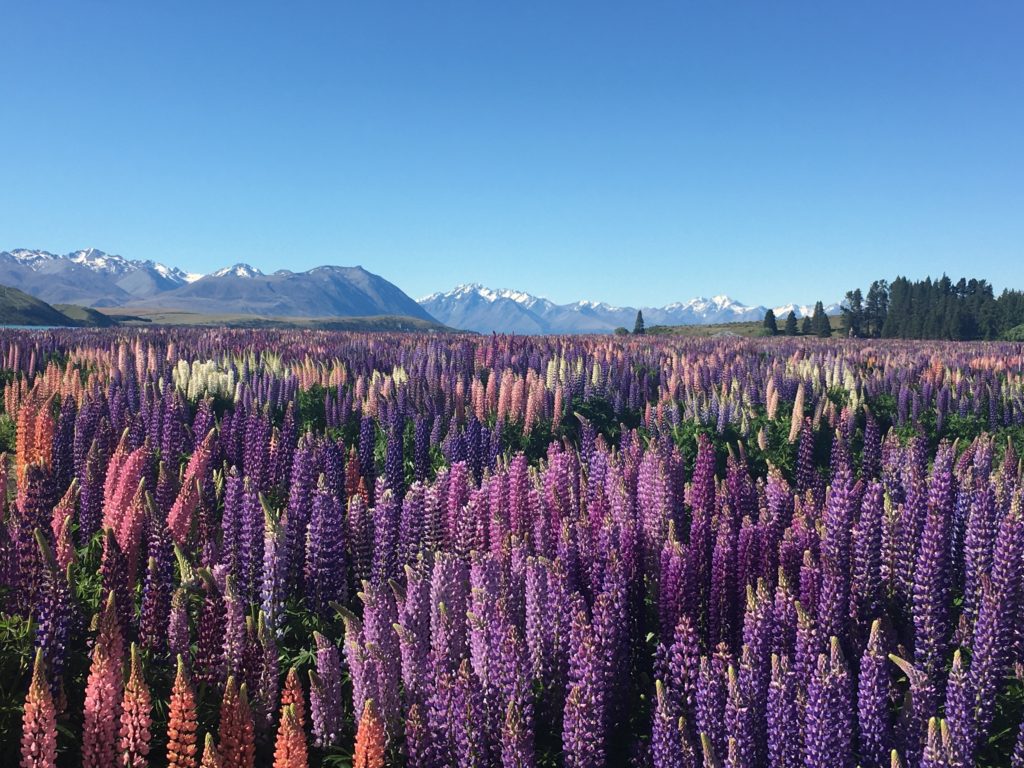
Autumn (March – May)
With temperatures ranging from 7 – 21°C (45 – 70°F), autumn is a perfectly mild time to come to New Zealand. There is still plenty of sunshine, which makes it a great time to come if you want to do any outdoor activities like hiking or cycling.
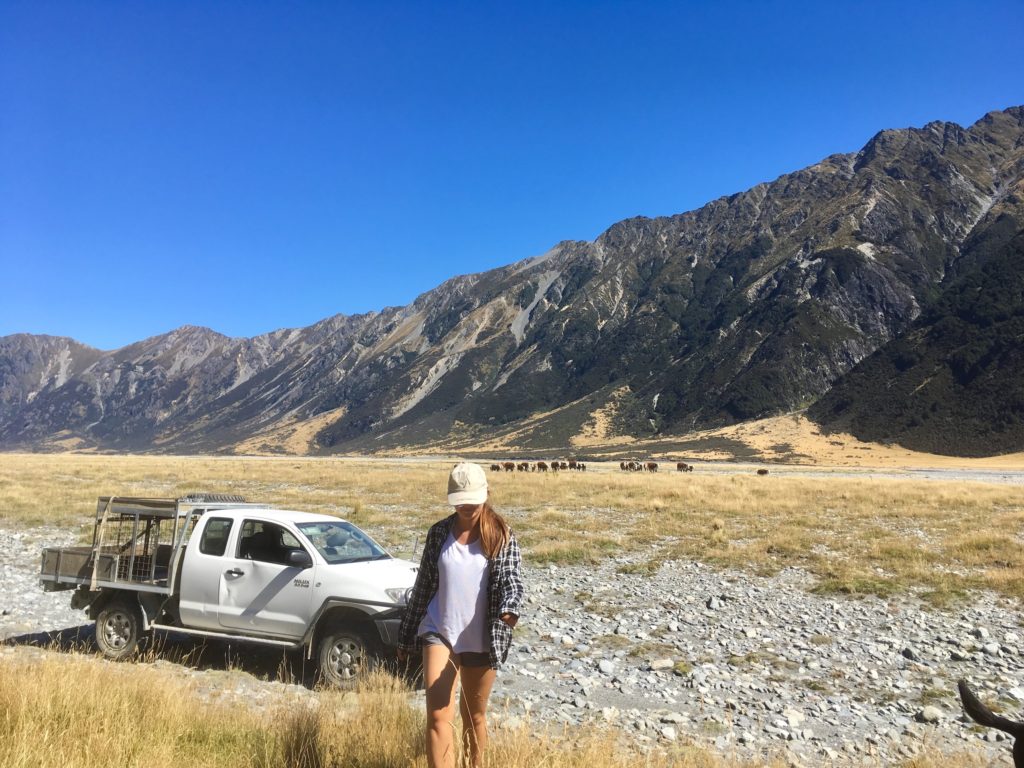
Winter (June – August)
Winter is the coldest time in New Zealand, with temperatures ranging from 1.5 – 15.5°C (35 – 60°F). If you’re into winter sports like skiing or snowboarding, this is a great time to visit. Snow is pretty common, especially the further south you go.
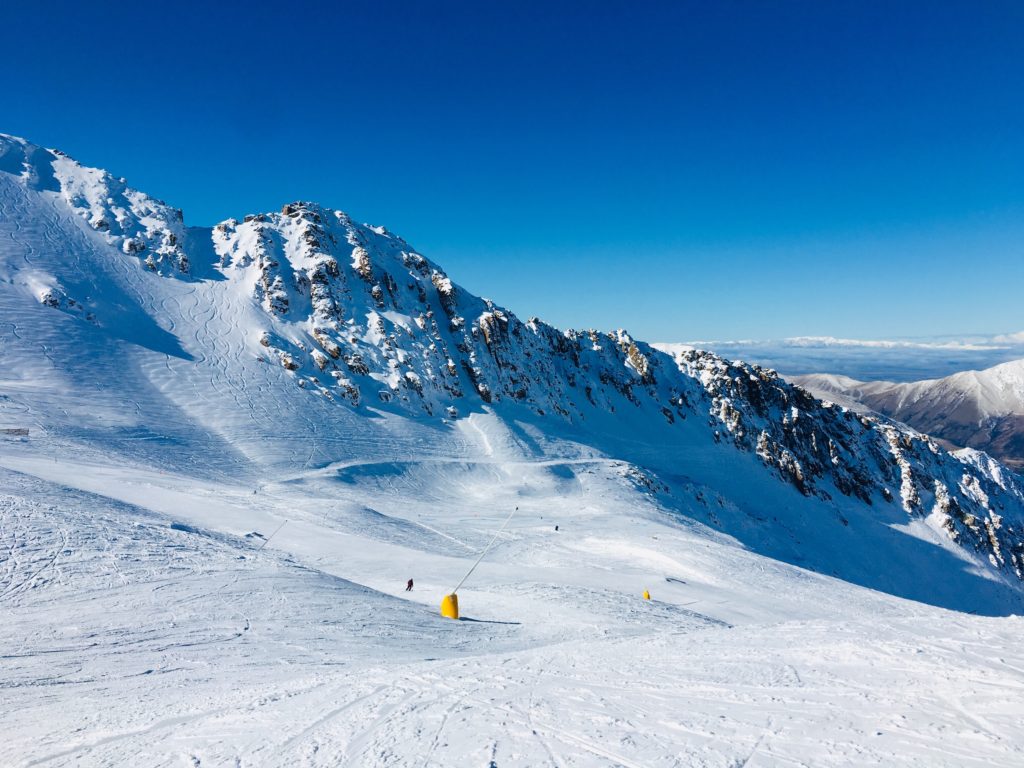
Places to visit when traveling New Zealand
You have many places to choose from depending on what you’re looking to do when traveling New Zealand. Each spot has a slightly different vibe and will offer different types of activities. I’ve listed a few of the most popular places to go below.
North Island
- Auckland: Big city vibes
- Coromandel peninsula: Laid-back beaches
- Rotorua: Natural wonders & Māori culture
- Taupo: Lake & hot springs
- Mt Taranaki: Volcano with hiking
- Wellington: Hip water-front city, food & drink culture
South Island
- Abel Tasman National Park: Tropical forests and beaches
- Christchurch: A garden city with a vibrant culture
- West Coast: Unspoiled nature & isolation
- Aoraki/Mt Cook National Park: Dramatic, snow-capped mountains
- Queenstown: Extreme sports & activities
- Milford Sound: Boat rides & waterfalls
- The Catlins: Wild coast & rock formations
⇉ The Best Places to Visit on New Zealand’s South Island: A Definitive List

Traveling New Zealand
Once you’re in the country, there are a few different ways to get around. In general, public transit between cities isn’t the greatest in New Zealand (within a city, it’s usually decent enough).
Traveling New Zealand by air
If you’re pressed for time, flying is the easiest and fastest way to get around the country. Air New Zealand and Jetstar are the two biggest domestic airlines. Flight prices range from about NZ$40 to $200 depending on destination and date, making it a pretty affordable way to get from point A to point B.
Auckland, Wellington, and Christchurch are the country’s main domestic hubs. Many smaller towns have airports that fly into one or more of these cities.
Campervan travel
Renting a campervan is probably the best choice for traveling New Zealand — it’s flexible and cheaper than staying in hotels. Many companies offer fully kitted-out vans for hire. Some of the most popular are Britz, Jucy, and Maui Rentals (among others!). There are also companies that offer fully customizable van remodels, although these will be much more expensive.
New Zealand is a great country for campervans. There are many places to camp (free and paid), fill up water tanks, and dump greywater. If your campervan is self-contained, it’s also possible to freedom camp in some places.
⇉ Helpful New Zealand travel apps
⇉ How to plan the perfect New Zealand road trip
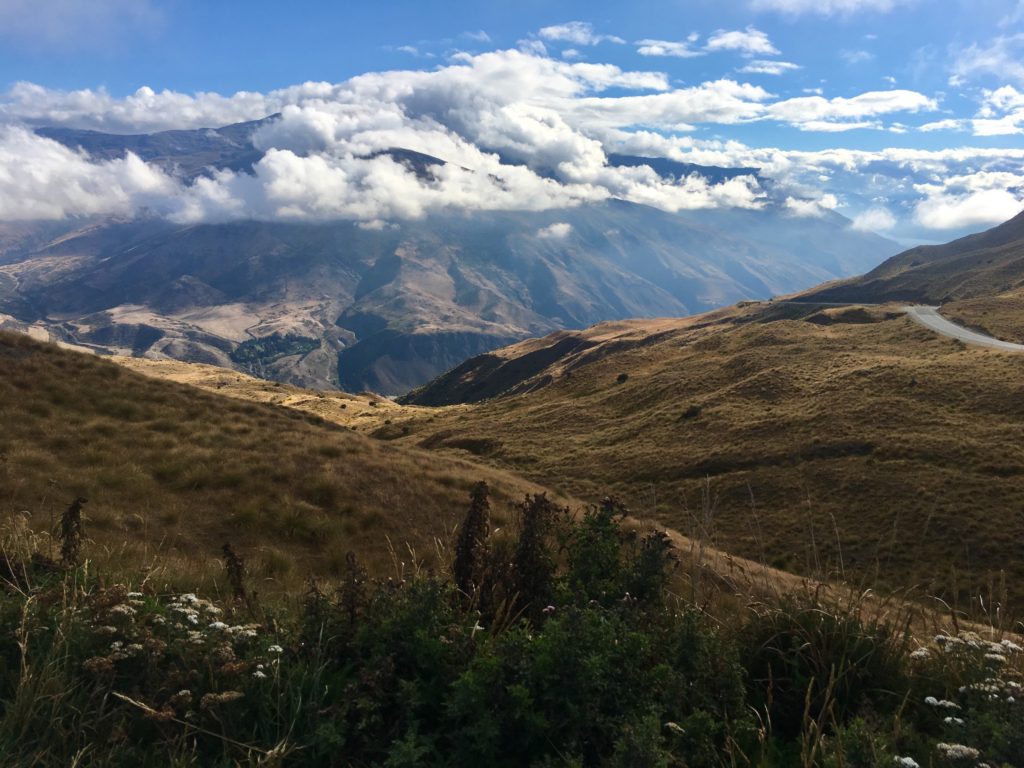
Traveling New Zealand by car
If you prefer not to rough it, renting a car is the way to go. You get the flexibility and freedom of a road trip with all the comforts of a hotel at night.
There are several companies that offer car rentals in New Zealand (the most popular being Hertz and Europcar). Generally, the longer you rent a car, the cheaper your daily rate will be.
Main roads in the country are clearly marked and well-maintained. Outside of the big cities, traffic is nearly nonexistent. You can drive in New Zealand for up to 12 months on a current driver’s license from your home country (or with an International Driving Permit).
Keep in mind that you’ll need to pay for accommodation in addition to any petrol, insurance, and car rental fees. Renting a car may be the more comfortable option, but it’s more expensive overall.
Traveling New Zealand by ferry
If you’re not flying, the only way to get between the North and South Islands is by ferry. The two ferry companies are Bluebridge and Interislander. They run several times a day between Wellington and Picton.
When booking tickets, you have the option to either walk on or drive on with your vehicle. If you’re doing a road trip spanning both islands, the ferry is the best way to get your car or campervan across the Cook Strait. You also have the option of bringing your bicycle or motorcycle.
Hitchhiking
Hitchhiking is legal in New Zealand! It’s not uncommon to see one or several hitchhikers on the side of the roads here. Hitchhiking has the potential of being a great, cheap way to get around. If you follow your instincts and are comfortable with it, it’s possible to safely make your way almost anywhere in the country.
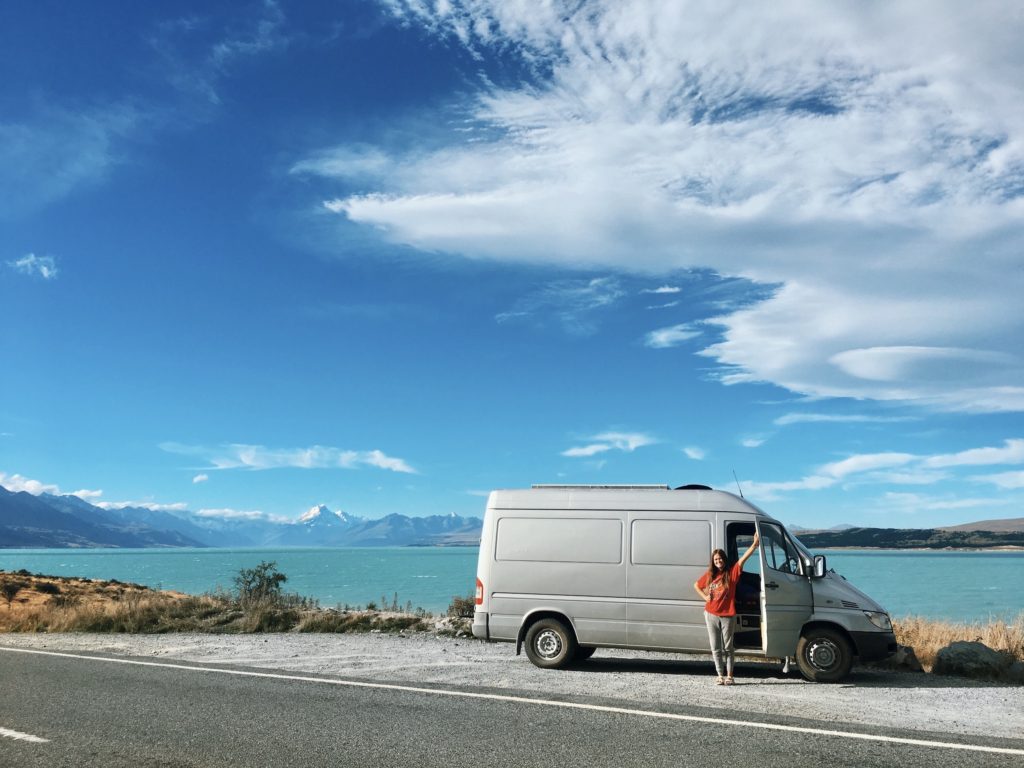
Accommodation when traveling New Zealand
Depending on how you’re traveling New Zealand, you may want to look for a certain type of accommodation. Those traveling by car, plane, or public transportation should look for hotels, Airbnbs, or hostels. If you’re in a campervan, holiday parks, DOC sites, and freedom camping are the way to go.
Hotels
Hotels in New Zealand run the gamut from budget to luxury. You can find all of the standard international hotel chains, as well as boutique and independently-owned ones.
Airbnb
There are thousands of Airbnb listings in New Zealand. Just like hotels, they range from pretty affordable to wildly expensive. You can also find really unique accommodations, like this actual Apollo 11 spaceship.
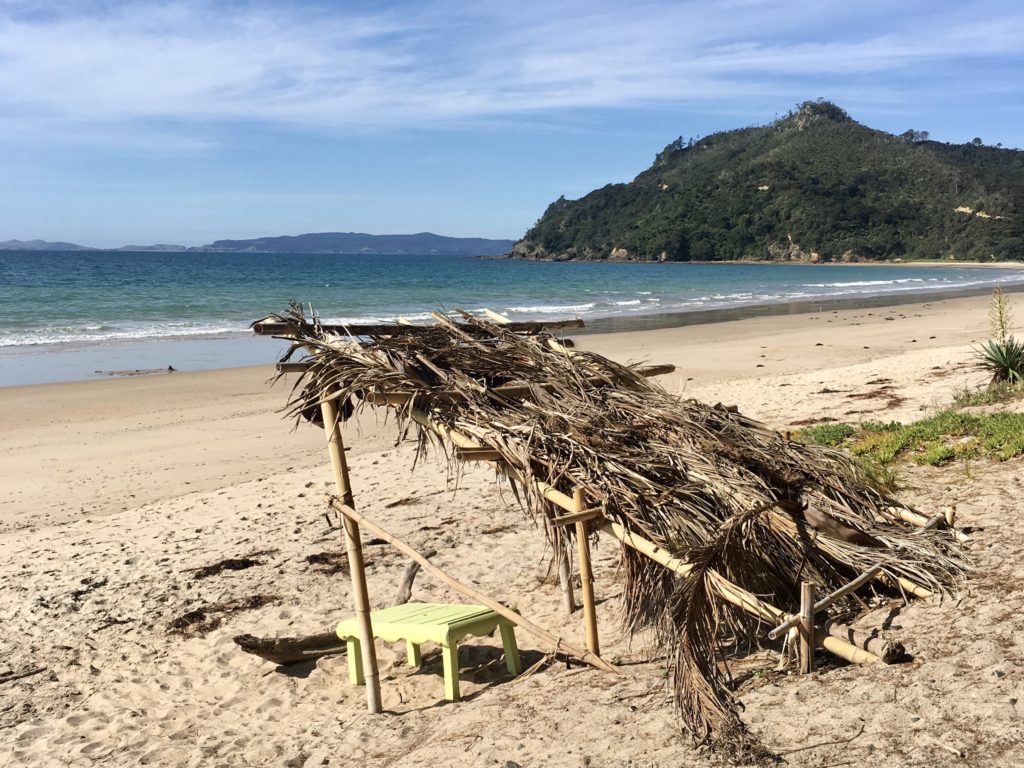
Hostels
Backpacker hostels are great if you want to meet new people and/or not spend a lot on accommodation. Private hostel rooms are often cheaper than hotel rooms (albeit usually not as nice). YHA is a common hostel chain found throughout the country.
Holiday parks
Holiday parks provide both powered and non-powered sites for campervans, as well as regular campsites for those with tents. They usually provide a shared kitchen area, lounge space, showers, and toilets. These parks are cheaper than hotels but often more expensive than DOC sites. When we travel in the van, Top10 holiday parks are our go-to’s when we want a bougier camping experience.
DOC sites
DOC (Department of Conservation) sites are simple, government-funded campsites for vans and tents. They can be either free or paid (but still relatively affordable). DOC sites are generally a bit further from town and deeper in nature, often giving you great views.
Freedom camping when traveling New Zealand
Freedom camping is allowed in certain areas of the country. It allows tent campers, campervans, and other vehicles to camp on public land for free. There are minimal or no facilities like showers or toilets, meaning the responsibility falls on the camper to be responsible and keep things clean.
There are 4 basic rules to freedom camping:
- Dispose of rubbish responsibly
- Keep New Zealand clean
- Protect our environment
- Only empty your toilet + waste water in designated dump stations
It’s absolutely vital that you follow these rules if you’re thinking of freedom camping. New Zealand is blessed with gorgeous parks, forests, and beaches, and it’s up to us to keep them that way.
⇉ Everything you need to know about New Zealand freedom camping

How much will my New Zealand trip cost?
New Zealand can be an expensive country to travel to, but there are ways to cut your costs. Here are some estimated daily amounts you can expect to spend per person on your trip:
- $100/day or less: This backpacker budget will allow you to rent a campervan and spend most nights at free or inexpensive campsites. You’ll grocery shop for most of your meals and will be able to enjoy all the free activities New Zealand has to offer.
- $100-200/day: This is a standard budget for traveling New Zealand. You’ll be able to stay in modest hotels and eat out a few times a week. This amount of money gives you a chance to experience one or two bucket list activities.
- Over $200/day: With this budget, you can afford to stay in boutique accomodations around the country. You’ll be able to eat out more often and pay for more once-in-a-lifetime activities.
⇉ How to Travel New Zealand on a Budget (21 Money-Saving Tips)
Things to do when traveling New Zealand
There is so much to do here. Here is a small sampling of popular activities while traveling New Zealand:
- Take a hike: Day hikes are everywhere around the country. For the more ambitious hikers, try one of the Great Walks.
- Get the adrenaline pumping: Bungy jumping, skydiving, white water rafting, jet boating… the list goes on. Queenstown in particular is known for extreme sports.
- Learn about Māori culture: Visit a cultural village, partake in a hāngī buffet, or watch a traditional Haka dance.
- Visit the “8th Wonder of the World”: Milford Sound is one of New Zealand’s biggest attractions. You can see it either by boat ride or kayaking.
- Go wine tasting: From Waiheke Island to the Marlborough region, good wine is everywhere.
- Soak in hot springs: The country is full of natural geothermic activity. You’ll find hot springs in Rotorua, Taupo, Omarama, and more.
- Stargaze: New Zealand has some of the darkest skies in the world, with several spots being known as Dark Sky Sanctuaries.
New Zealand people & culture
The total population of New Zealand is about 5 million people. Of those, 75% live on the North Island, with a full 33% of the population living in Auckland!
Demographically, 70% are of European descent, 16.5% are Māori, 15.1% are Asian, and 8.1% are non-Māori Pacific Islanders. The Māori are the indigenous people of New Zealand. Their culture plays a role in everyday life — you can feel the values of connectedness and hospitality at play.
New Zealanders (also known as Kiwis) are generally pretty friendly and down-to-earth. Clothing, speech, and mannerisms are casual rather than formal (you can often spot Kiwis going barefoot in places like the supermarket!).
Languages in New Zealand
The three official languages of New Zealand are English, te Reo Māori, and New Zealand sign language. Many signs around the country are written both in English and in te Reo (“the language”). It’s also common to hear words or phrases in Māori here and there. Here are some popular phrases you might hear:
- Aotearoa: New Zealand
- Kia ora: Hello
- Mōrena: Good morning
- Ngā mihi: Thank you
- Aroha mai: Sorry
⇉ New Zealand slang: 45 terms to help you sound like a Kiwi

Religion
In the 2018 census, almost 50% of New Zealanders stated that they have “no religion.” The next largest portion at 37% stated they were Christian. 6% were undeclared, and Hinduism, Islam, Buddhism, and Sikhism made up the rest. In general, New Zealand is a very tolerant country that protects freedom of religion.
Currency
New Zealand uses the New Zealand dollar ($). Bills come in denominations of $5, $10, $20, $50, and $100. There are $1 and $2 coins, often referred to as gold coins. Smaller coins come in 10, 20, and 50 cent pieces. You might notice that there are no 1c or 2c coins — they were demonetized in 1990 and cash transactions are now rounded to the nearest 10 cents.
Safety when traveling New Zealand
Traveling New Zealand is relatively safe. Violent crime is thankfully quite rare. The biggest threat you’re likely to run into as a traveler is theft. As theft is often a crime of opportunity, the easiest way to prevent it is to make sure your vehicle is locked and your belongings are nearby.
Wifi and SIM cards
Wifi can be found almost everywhere now. Hotels, campsites, restaurants, and cafes all usually offer free wifi (the quality of which can sometimes be questionable).
If you’ll be traveling New Zealand for a few weeks or more, I highly recommend buying a local SIM card to put in your phone. They cost around $5 and can be bought at any gas station or dairy.
My favorite provider, and the one I use living here, is Skinny Mobile. For NZ$36 a month, you get 4.5 GB of data at max speeds (after you use that, it turns into unlimited data at slightly slower speeds!). In my experience, the slower speed data doesn’t even seem any slower than the max speed data. Skinny has the cheapest unlimited data plan you can buy in the country.
New Zealand food
New Zealand cuisine is very similar to English cuisine, with a few local twists. Here are some must-try dishes when you’re in the country:
- Fish and chips
- Roast lamb
- Māori hāngī: a cultural feast where the food (meat and vegetables) is cooked in a pit oven using heated rocks
- Pavlova
- Hokey Pokey ice cream
⇉ Rating classic New Zealand snacks
Drinking culture when traveling New Zealand
Wine and beer are the two most popular alcoholic drinks in New Zealand. Since wine is produced here, you can find very nice bottles for pretty reasonable prices. Some wine regions you can visit when traveling New Zealand include:
- Marlborough
- Waiheke Island
- Central Otago
- Hawkes Bay
As for beer, the most popular brands are Speight’s and Tui. You’ll also find plenty of small-batch craft beers from independent breweries. Ciders and hard kombuchas are also gaining popularity.
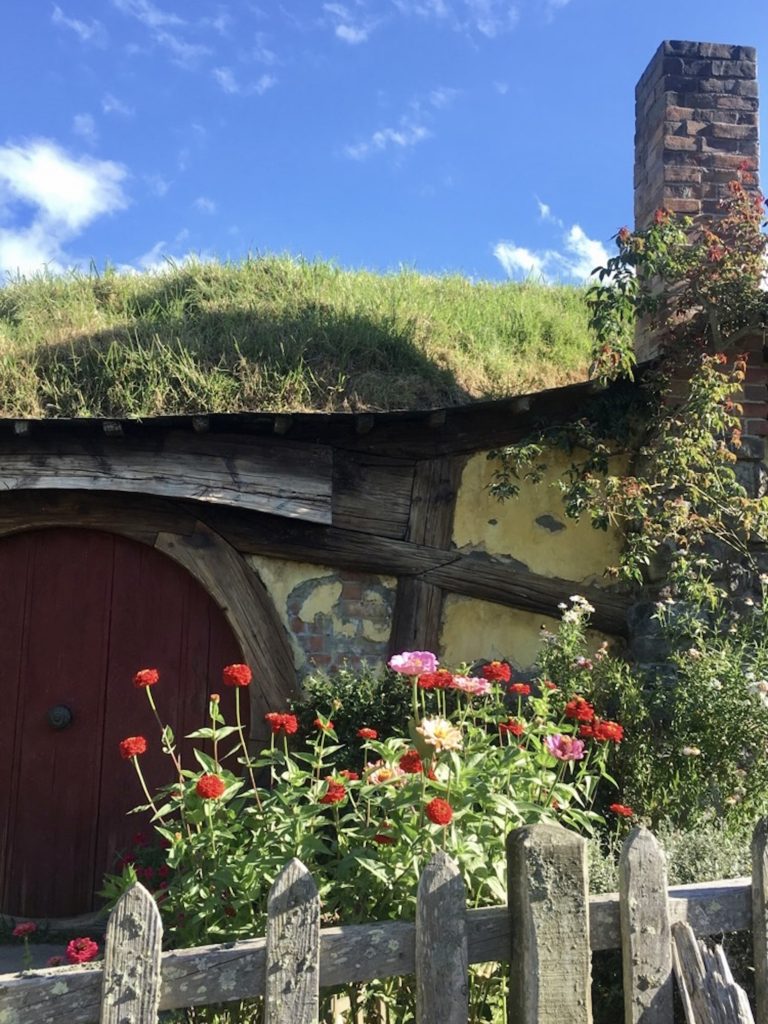
Hopefully this guide will be useful for traveling New Zealand (once it’s possible again!). I’ll keep this post updated with any new information, as well as any relevant links to future posts. Thanks for reading!
xoxo Niki
Pin this post to save it for later!
